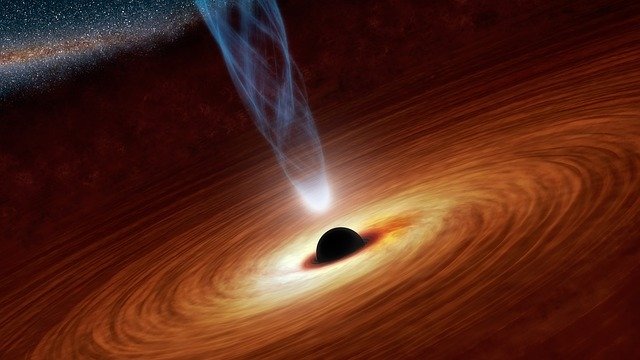The Royal Swedish Academy of Sciences awarded Roger Penrose, Reinhard Genzel and Andrea Ghez for their research on black holes. Revyuh brings you the most curious data about this space phenomenon.
According to the Academy, Penrose theoretically proved the existence of black holes with the help of mathematical methods, while Genzel and Ghez did so on a practical level. They were the first to independently visually identify the existence of a “supermassive compact object” at the center of our galaxy. It is believed to be a black hole.
“It is a Nobel Prize for recognition, it should have been awarded for a long time,” Alberto Corbí, a research professor at the International University of La Rioja (UNIR), explained to Hypertextual.
What is a black hole?
Black holes are the regions of spacetime where there is a concentration of mass high enough to generate a gravitational field that no material particle, not even light, can escape from.
Only radiation can escape. “One of the contributions of Stephen Hawking was the theory that a black hole is not so dense in the sense of quantum mechanics.” Over time, Hawking radiation could cause the black hole to simply evaporate.
The term black hole was used for the first time in 1967 until then they were known as “star in complete gravitational collapse”.
How are they formed?
Black holes form when a very massive star collapses under its own weight from running out of fuel. A supernova is generated that can result in two things: a neutron star or a black hole. Another formation scenario is the collapse of the central part of the galaxy or the proto-galactic gas. The black hole at the center of our Milky Way is called Sagittarius A *.
Also, some black holes could have formed at the beginning of the Universe in the immediate aftermath of the Big Bang due to fluctuations in the gravitational field. These black holes are called primary holes.
Also, it is believed that they can appear in the result of high-energy nuclear reactions, then they would be called quantum black holes.
What types of black holes are there?
It is believed that any object that undergoes gravitational collapse is a black hole, can be described using just three parameters: mass, charge, and angular momentum. So there are two types of classifications of black holes.
Depending on the mass, they can be supermassive, having several million solar masses. They are usually found in the heart of galaxies. For example, Sagittarius A * weighs about 4.31 million solar masses. The super-massives are followed by black holes of intermediate-mass, from 100 to a million solar masses. Stellar-mass black holes are relatively small and have more than three solar masses. They are formed from collapsed stars. They are those that Penrose and Hawking discovered at the theoretical level within Einstein’s theory of general relativity. The fourth subgroup is black microholes. This type of physical entity is postulated in some approaches to quantum gravity.
Another classification considers the rotation and angular momentum of this phenomenon. In this way, there are four types of black holes, depending on whether they rotate and are charged.
How was the black hole in the Milky Way discovered?
Andrea Ghez and Reinhard Genzel led two groups of astronomers who in the early 1990s studied the Sagittarius A * region at the center of our galaxy.
“For decades, Ghez and Genzel looked at the position of the stars around the black hole. They realized their peculiarity when they saw the crazy orbits and with excessive accelerations. And where there should be something that caused all that, there was nothing. You could see nothing,” explained Corbí.
By ruling out the possibility that it was a known object “as there was nothing that made them behave like this and it was not seen, it had to be a black hole,” he said.
Scientists analyze the gravitational waves that spread through space and time and study what happened in space. In this way, the collision of a black hole and a neutron star and the collision of two black holes were discovered.
The first photograph of a black hole
The first photo of a black hole was obtained by the Event Horizon Telescope and presented in April 2019. It is the image of a supermassive at the center of the Messier 87 galaxy, located 54 million light-years from Earth.
In the image you can see the black hole in the center surrounded by a reddish area, it is the matter orbiting around it at a very high speed.
In April 2020, scientists received a more detailed image of a jet of matter ejected by a supermassive black hole, located at the heart of quasar 3C 279, 5 billion light-years from Earth.
